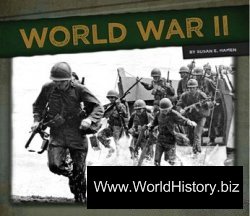As can be seen in Table 12.1 Of some cIties, the irst group of ive cities that are discussed in the volume are several orders of magnitude removed from the second group of cities. Fisher's and Creekmore's approach "avoids restrictive deinitions of 'city' or 'urban' based solely on population size or density." Thus, Fisher declares for sites of 14 and 11.5 ha - little more than some large early villages of the early Neolithic period in Western Asia and that also provided services to and reshaped a countryside: "I have no dificulty deining the urban
Centers discussed here as cities." Be that as it may, cities that are thirty or three-hundred times larger than others are certainly different in terms of power structures, wealth and status stratification, kinds of neighborhoods, the nature of services to the countryside, social and economic tensions of their population, and not least, ideas of city life and that of the countryside. I don't think, as a Santa Fean, that I need belabor the point that New York City is a different kind of city than my city. In this volume, the palace of Galatas (in Buell's study) is an impressive (for him) 1 ha in size, whereas one market in Chang'an is 50 ha. The differences in these two cities is at least as significant as their shared "city-ness."
DIFFERENT CITIES
Andrew Creekmore and Kevin Fisher and the contributors to this volume, it seems to me, are mainly interested in how people lived in cities and how cities are the "products and facilitators of social life." Thus, the chapters by Creekmore, Nishimura, Fisher, Buell, Fitzsimmons, and Wynne-Jones and Fleisher on the making of the cities they study are about how neighborhoods are constructed both in top-down (by rulers or leaders) or bottom-up (by local community) processes. They cite commentators on urban structures (such as Jacobs, Lefebvre, Rapoport, and Soja) and French social theorists (such as Foucault, Latour, and de Certeau) on places as both reflecting and generating patterns of hierarchy and dominance, and refer to archaeologists such as the Smiths (Adam T., Michael, and Monica) who have insisted on the generative power and social construction of space in the study of early cities.
An alternate title for this book might have been "neighborhoods and power in early cities" since most chapters are concerned with the relation of central authorities, of different kinds, with their local communities (and the archaeological correlates of this, as in the high and low mounds discussed by Creekmore and Nishimura). Allied concerns are thus about commensality, collective identity, group cohesion, and councils of various sorts. Although cities are "products and producers of transformations" (in Fisher's words), they also can lead to "fiery destructions" (of Azoria, for example, but also of other cities), violence and disorder (in Creekmore's words), and collapses (many examples). Concern with "integration" and "cohesion" need balancing with the unstable features of urban size (even in the micro-urban examples presented here), political formations, and relations with a countryside that is "served" by cities. These services are often balanced by the resentments of those urban impositions by
Those in the "hinterlands" (which is itself, obviously, an urban-biased term).
In conclusion, readers of this book can see many new trends in archaeological analysis, trends that are determined to put people into ancient cities. There is a welcome turn from the formalistic study of the evolution of large sites to a concern with what happened in those sites. The contributors to this volume ask not only how did people live but also how did they understand their lives? Can we go further - with a new arsenal of studies on social memory, nostalgia, performance, and material culture? What kind of jobs did people who lived in early cities have? How did they form neighborhoods? What did they think of their political structures? How did they think of their past, and what hopes did they have for their future?
The studies in this volume offer platforms for new projects that can lead to better research into social life and change in early cities, studies that avoid essentializing "the city" and promote new and better comparative studies.




 World History
World History









